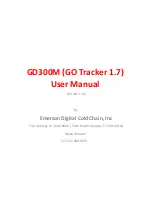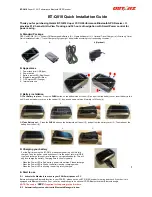
Introduction
GMS-2 Operator’s Manual
2
and time services on a global, all-weather, 24-hour scale to any user
equipped with a GNSS tracking receiver on or near the Earth’s
surface:
• GPS – the Global Positioning System maintained and operated by
the United States Department of Defense. For information on the
status of this system, visit the US Naval Observatory website
(http://tycho.usno.navy.mil/) or the US Coast Guard website
(http://www.navcen.uscg.gov/).
• GLONASS – the Global Navigation Satellite System maintained
and operated by the Russian Federation Ministry of Defense. For
information on the status of this system, visit the Ministry of
Defense website (http://www.glonass-center.ru/frame_e.html).
• GALILEO – an upcoming global positioning system maintained
and operated by Galileo Industries, a joint venture of several
European space agencies working closely with the European
Space Agency. Unlike GPS and GLONASS, this is a civil
endeavor and is currently in the development and validation stage.
For information on the status of this system, visit the Galileo
Industries website (http://www.galileo-industries.net).
Despite numerous technical differences in the implementation of
these systems, satellite positioning systems have three essential
components:
• Space – GPS, GLONASS, and GALILEO satellites orbit
approximately 12,000 nautical miles above Earth and are
equipped with a clock and radio. These satellites broadcast digital
information (ephemerides, almanacs, time&frequency corrections,
etc.).
• Control – Ground stations located around the Earth that monitor
the satellites and upload data, including clock corrections and new



































